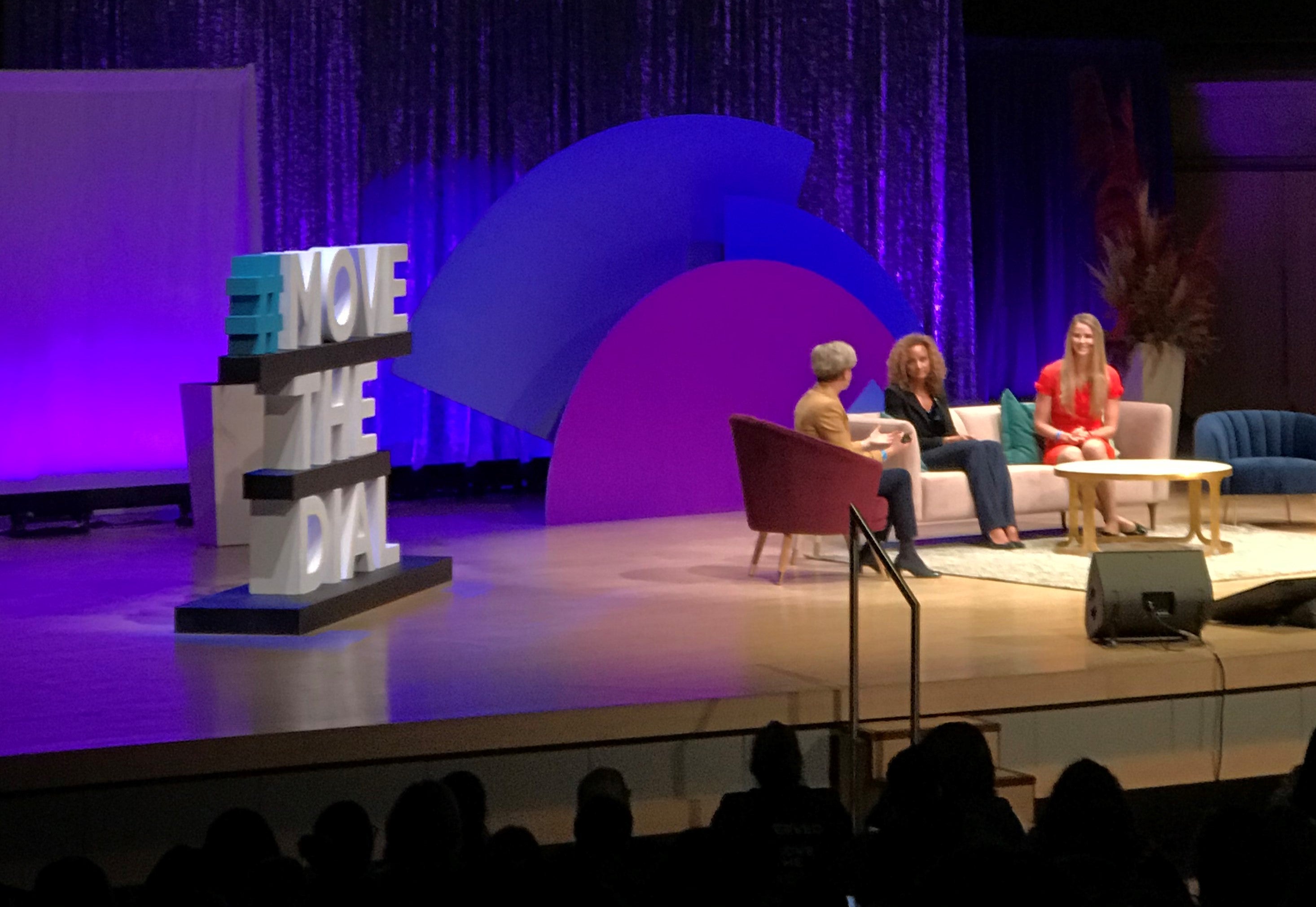By Hannah Bernstein

As a PeaceTech Peer Leader, I am excited to share what I have learned about inclusion and diversity in the last few weeks, and how they relate to the field of PeaceTech. On November 14th, I had the privilege of attending the #movethedial Global Summit 2019 in Toronto, where the keynote focused on encouraging attendees to use diversity and inclusion principles in design-thinking. The following week, Grebel’s PeaceTech Living-Learning Community had the honour of learning about human-centered design from Kyrie Vala-Webb, a former Grebelite and UWaterloo Knowledge Integration graduate who works as a designer at Overlap Associates. Being able to discuss what I learned at the #movethedial conference with my peers at our PeaceTech meeting was the perfect way to continue learning and exploring the many nuances of inclusive design.
The #movethedial Global Summit, founded by Jodi Kovitz, had over 2,000 attendees, a quarter of whom were students like myself. The key message of the summit, across over 100 speakers and panelists, was promoting the idea of going “ALL IN,” in ensuring ALL voices have a seat at the design table. The speakers also strongly encouraged everyone who attended to be an agent of change in their personal lives, and to go above and beyond every day to embrace diversity and fight for inclusive spaces.

Many of the companies that attended, such as Accenture, discussed challenges that women of diverse backgrounds face in terms of diversity and inclusion in the tech workforce. One of the main challenges for the women who shared their experiences were the different expectations put on diverse women in the workplace, and how advancing in the company hierarchy was often tied to a diversity quota. These conversations brought to light the gaps of inclusivity in tech, opening the door for those of us in the tech field to make more inclusive designs and have more inclusive spaces.
In conversing with Kyrie at our PeaceTech meeting, I reflected on what it means to have a truly inclusive space. To illustrate the complexities of inclusive design, Kyrie gave the example of an “accessible” washroom. This is a necessary space for someone who is in a wheelchair, and it may benefit others with similar accessibility concerns. However, for someone who is blind, an accessible washroom can be a very difficult space to navigate, and inclusive design features, such as guiding walls or distinct buttons for emergencies, are often missing. This emphasis on creating a design for the “average user” is prevalent all across the tech world; yet, as Kyrie explained, there is no average user.
A lack of understanding in inclusive design is so common that it even has a name: the “Curb Cut Effect.” Named for the unintentional benefits that wheelchair-accessible curb cuts created for people with strollers, cyclists and delivery systems (to name a few), the effect illustrates the common misconception that inclusive design will not actually benefit society as a whole. When designers approach projects with the question, “how many people will actually need this?” or the assumption, “I can remove the outliers and design for the average user,” mistakes happen (as seen in cockpit design), or society misses out (as seen in curb cuts). Misconceptions like these persist when notions of inclusion and accessibility are used as a checklist, rather than vital aspects of design that should be integrated from the beginning of the process. Thus, the design process can not only be improved from creating space for diversity and inclusion, but also needs diverse voices every step of the way to ensure we, as a society, are making the best use of our spaces and resources, allowing access to all users.
These experiences and conversations have reminded me of the importance of ensuring that I am including people in the conversation, considering every user rather than the “average” user, and considering how my designs can actually be beneficial to ALL.